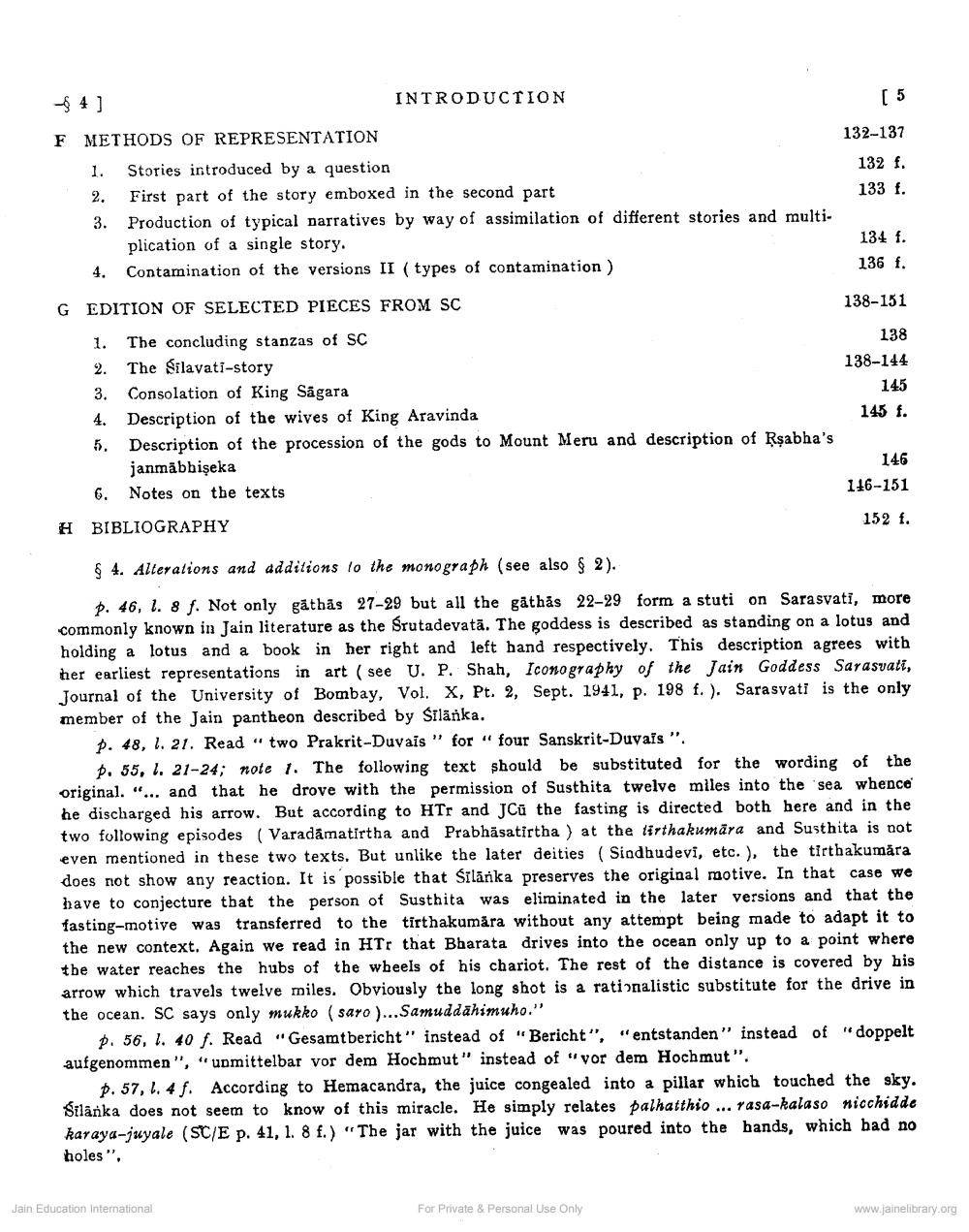________________
[5
132-137
$4]
INTRODUCTION F METHODS OF REPRESENTATION
1. Stories introduced by a question 2. First part of the story emboxed in the second part 3. Production of typical narratives by way of assimilation of different stories and multi
plication of a single story. 4. Contamination of the versions II ( types of contamination )
132 f. 133 f.
134 f. 136 f.
G EDITION OF SELECTED PIECES FROM SC
138-151
138 138-144
145 145 f.
1. The concluding stanzas of SC 2. The Silavati-story 3. Consolation of King Ságara 4. Description of the wives of King Aravinda 5. Description of the procession of the gods to Mount Meru and description of Rşabha's
janmābbişeka 6. Notes on the texts H BIBLIOGRAPHY
146 146-151
152 f.
$ 4. Alterations and additions to the monograph (see also § 2).
p. 46, l. 8 f. Not only gathas 27-29 but all the găthas 22-29 form a stuti on Sarasvati, more commonly known in Jain literature as the Srutadevatā. The goddess is described as standing on a lotus and holding a lotus and a book in her right and left hand respectively. This description agrees with her earliest representations in art (see U. P. Shah, Iconography of the Jain Goddess Sarasvati, Journal of the University of Bombay, Vol. X, Pt. 2, Sept. 1941, p. 198 f.). Sarasvati is the only member of the Jain pantheon described by Silänka.
p. 48, I. 21. Read "two Prakrit-Duvais " for "four Sanskrit-Duvais ".
p. 55, I. 21-24; note 1. The following text should be substituted for the wording of the original. "... and that he drove with the permission of Susthita twelve miles into the sea whence he discharged his arrow. But according to HTr and JCū the fasting is directed both here and in the two following episodes (Varadāmatirtha and Prabhāsatirtha ) at the firthakumāra and Susthita is not even mentioned in these two texts. But unlike the later deities (Sindhudevi, etc.), the tirthakumara does not show any reaction. It is possible that Silarka preserves the original motive. In that case we have to conjecture that the person of Susthita was eliminated in the later versions and that the fasting-motive was transferred to the tirthakumara without any attempt being made to adapt it to the new context. Again we read in HTr that Bharata drives into the ocean only up to a point where the water reaches the hubs of the wheels of his chariot. The rest of the distance is covered by his arrow which travels twelve miles. Obviously the long shot is a rationalistic substitute for the drive in the ocean. SC says only mukko (saro )...Samuddähimuho."
p. 56, 1. 40 f. Read "Gesamtbericht" instead of "Bericht", "entstanden" instead of "doppelt aufgenommen", "unmittelbar vor dem Hochmut" instead of "vor dem Hochmut".
p. 57, . 4 f. According to Hemacandra, the juice congealed into a pillar which touched the sky. Silanka does not seem to know of this miracle. He simply relates palhatthio ... Tasa-kalaso nicchidde karaya-juyale (SC/E p. 41, 1. 8 f.) "The jar with the juice was poured into the hands, which had no holes",
Jain Education International
For Private & Personal Use Only
www.jainelibrary.org




